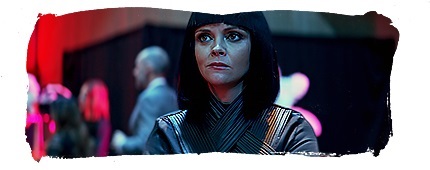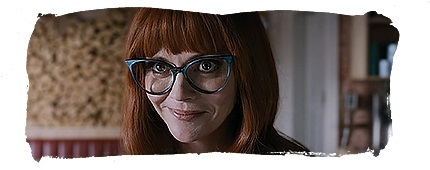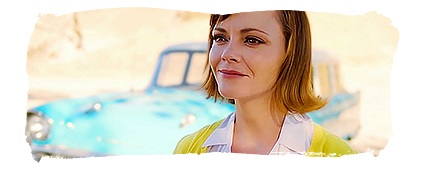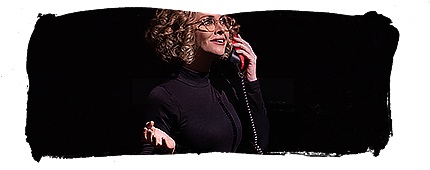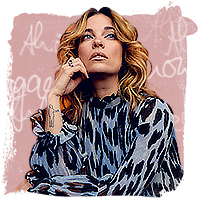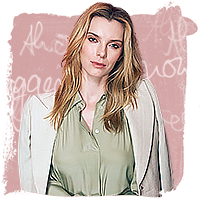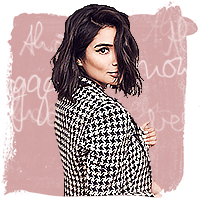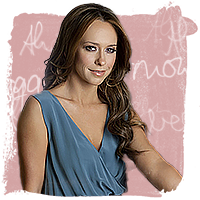
|
23
Sep 2011
Webmiss
|
Though Christina Ricci’s film debut in Mermaids was generally liked, she made an even deeper impression on audiences with her work in the two Addams Family films, as the gleefully morose Wednesday Addams. She followed that with a handful of roles in films largely aimed at younger audiences, including Now And Then and Gold Diggers: The Secret Of Bear Mountain. She transitioned to more adult roles in the late ’90s, with acclaimed indies like The Opposite Of Sex, Buffalo ’66, and The Ice Storm. Since then, she’s starred in films both mainstream (Speed Racer, Sleepy Hollow) and off the beaten path (Monster, Penelope). Ricci has had a few TV guest spots over the years, and she recently took her first starring role in ABC’s promising new stewardesses-in-the-’60s series, Pan Am, where she plays the politically aware, rebellious Maggie. Ricci recently talked to The A.V. Club about the misogyny of the ’60s vs. the misogyny of now, what she likes best about the show’s opulent sets, and what it’s like adjusting to TV work.
The A.V. Club: Your character is a window into the era’s politics and international strife. Did that interest you before you read the script?
Christina Ricci: Yeah. I like that she has more of a worldview than some of the other girls. She has more of an interest in politically what’s going on at the time.
AVC: What about that era intrigued you?
CR: The history of that time is really fascinating. It’s incredible how much our country changed in such a short period of time. It’s really… When you think about how much went on… What’s great about our show is that it’s poised to tackle all that stuff, should the show go on for a couple of years. It’s just so amazing. The civil-rights movement. All that stuff. It’s just incredible.
AVC: In the pilot, your character is on leave after breaking a wardrobe restriction at work. Having grown up in an era where women have more traditional freedoms, how do you feel about portraying a more restrictive era?
CR: It’s interesting. We’re portraying women who are navigating a blatantly misogynistic world, time, and society. And we live in a society that is a thinly veiled misogynistic society. And we are women trying to navigate that. It’s interesting, because in some ways, while it’s nice that everyone pretends the world today is not misogynistic, in other ways, at least before, when it was blatantly misogynistic, it was a little bit more honest. Things were called what they were called, and the rules were set, and people knew what things they had to meet, and what things they had to check off the checklist. And once they abided by certain things, they could then kind of go and run free and avoid things that needed to be avoided. It was, in some ways, less confusing, and in some ways, less dangerous. I struggle with which is better.
AVC: What are the parallels between then and now?
CR: They actually wrote down, “You have to be this weight. You have to look like this. You have to blah blah blah.†These are unwritten rules we have now, but they certainly are rules that we have now. And certainly being an actress, I know that these are unwritten rules. There’s still physical requirements and guidelines. There were mandated behaviors for women that are now not mandated, but certainly expected. There’s different treatment for men and women. Back then, it was expected and probably openly talked about. Now, you know the same things still go on, but now we just pretend they don’t.
AVC: When you were reading the script, what about this attracted you to jumping into series TV for the first time?
CR: I really liked the story, and I thought it was really kind of a fun, new concept. I watch a lot of television, and I couldn’t really think of another show that felt like this, another show that this reminded me of. It just seemed very different to me, a very new concept. I also liked that I had sort of some misconceptions. I didn’t know very much about stewardesses at the time, and I loved that everything I thought about them was actually wrong. That was great.
AVC: What did you learn that surprised you?
CR: I didn’t know this whole thing about [Pan Am founder] Juan Trippe, and basically his agreement with the government—almost like a government contract—that Pan Am was always the company used by the government planes to go into Cuba and take out refugees, to go bring things into South Korea, to be kind of the government’s emissary, in a way. I didn’t know that the stewardesses had to be college-educated and had to speak two languages. I didn’t know that they were tapped quite often by the CIA. I didn’t know that these women were in the highest pay grade of most Americans, male or female. I didn’t really understand that they were more than this common misconception of the whole “Coffee, tea, or me?†kind of thing. I loved the idea that there could be a show that if I had daughters, I would be really quite happy for my daughters to see this show.
AVC: Do you know much about your character’s backstory?
CR: I don’t know much. It’s revealed to me very slowly. [Laughs.]
AVC: Is that frustrating?
CR: I think it’s fun. I can’t wait until more is revealed, until we see more stuff and know what’s going on.
AVC: You’ve quickly formed an ensemble with these other three women. What was that working environment like? How soon did you know you worked well together?
CR: Almost immediately. We all get along really well. We all laugh a lot and have a good time. We’ve all gotten along really well from the beginning.
AVC: The air travel of the time was so glamorous, unlike now. What surprised you about the set design or the costumes?
CR: I wasn’t really surprised, but I was very happy to see how beautiful everything was. All the planes, they always have orchids on them. Every plane has a different colored orchid scheme. All the silver’s real. We’ll go to pick up plates or platters, and everything’s all of a sudden really heavy. And it’s because all of the silver’s real! All of the glasses are real, and beautiful bottles on the bar. They have these caviar trays, and it’s just like… It’s so beautiful. Everything’s gorgeous.
AVC: Much is made in the pilot of how uncomfortable the uniform is to wear. What’s wearing it like?
CR: I think in the pilot, we’re talking about the girdle, and I don’t think anyone loves wearing the girdle, but they’re not that bad. They’re just hard to get out of quickly.
AVC: What are you hoping to see with this character? Where would you like to take her over the course of the season or series?
CR: I don’t know. I’m sort of excited to see what happens with her. She’s had some great storylines. I’ve seen a couple of scripts. Each script is better than the last. We’re traveling all over the world [on the show]. It’s really exciting and fun, and she’s turning out to be this really entertaining and funny and very driven woman.
AVC: As far as your process goes, have you had to shift it at all to work without knowing all of the story?
CR: I’m just kind of taking it as it goes. It’s a totally different medium for me, really. I’m trying to just go with the flow and learn from the people around me.
AVC: Have there been any characters from your film work that you would have liked to follow week-to-week like this?
CR: I don’t know. I liked DeDe from The Opposite Of Sex. She would have done some pretty interesting things, I imagine.
AVC: What are the advantages you’ve found of working in television?
CR: I think it’s really great to be able to stick with a character for a long period of time. It’s not like you have one shot, and that’s it. You get to say, “Well, okay, I can develop that, and we’ll see if that’s something I can work in next episode. Okay, she’s a little more that, or I’d like to show more of this side of her.†It gives you time. You have more time, more room, an ability to reflect on your performance and the character and how much has really been shown, and what you’d like to see. It’s nice. You have more breathing room.
AVC: When you were doing the pilot, was there a moment where you said, “I understand who this character is�
CR: No. When you’re doing the pilot, it’s sort of like, “We’ve gotta get this done.†Then you’re like, “I have no idea what I’m doing.†“Okay. Go!†[Laughs.]
AVC: What was the length of this pilot shoot?
CR: It was about a month, but the hours were really crazy. We had so much to shoot. There’s so much of it that we shot that gets cut out. It’s just such a mad dash to get everything done, and you don’t really know who you’re playing or what you’re doing, and you’re really relying heavily on the director to be like, “Is that good?†Because you really don’t know. You don’t know that much about the person you’re playing.
AVC: A lot of this takes place on the one airplane set. What was it like getting to know the one location backward and forward?
CR: It was good. Sometimes at 4 o’clock in the morning, you’d just kind of be like, “Oh, my God,†and you’d start to feel really dizzy. At one point, I fell over in coach, and because of the way the armrests are in coach, I hit myself in the coccyx bone, in the middle of my back, and right in the base of my neck, and I was just, like, “Man, couldn’t I have fallen over in first class?†But yeah, it was good, but you get really tired. At one point, me and Karine [Vanasse], we fell asleep in the bar section. And we were, like, “From now on, we’re gonna work in the bar section, so we can fall asleep on these couches.â€












